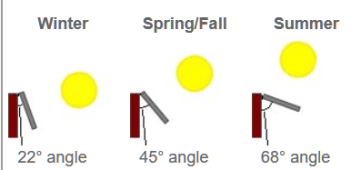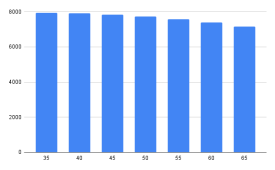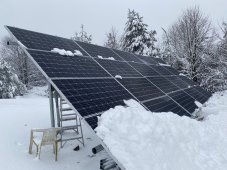My ground mount is set to 45 degrees which is the optimal year-round production angle for me, max generation, therefore, occurs in March & September. I am quite North near Algonquin Park Ontario so as you can imagine I get a LOT of snow in winter, 1'+ snowfalls are normal and even @ 45 degrees it sticks and can get up to 2' thick before it slips off. Fortunately being a ground mount with the lowest edge @ 4' off the ground I can brush it off with a Foam Brush (never use anything that can scratch or has a hard edge of any kind).
Don't get caught up on precision minutia, it will only serve to create stress and there isn't any point. Even making your rack 44 or 46 degrees will NOT make much difference in the grand scheme... The worst that will happen is your optimal generation may change by a few days... Really, it is NOT that significant so don't stress on it. As I stated above my Optimal Generation is Mar & Sep, my 2080W Array will actually get up to 2200W for about an hour (which is not unusual for panels). The GOTCHA right here !
The GOTCHA here is that all solar panels can actually produce more than their rating for various reasons like direction/angle, cooler temps and such. The FAIL part is when people calculate their solar array for their controllers they must account for that extra generation that can & does happen. Some Solar Charge Controllers like Midnite Solar have a feature called HyperVOC to address that and handle over generation, other SCC's do not and so it has to be accounted for. IF this is not accounted for and you over generate beyond the SCC's capabilities you can burn it out.
Also I want to point out something else that too many get buggered up on... Assume the software says you need to aim your panels Directly South (by compass point) @ 45 Degrees angle. You can be +/- and the Angle as it will only change the optimal generation "time period" by a few days either way. As for the E-W direction, again if not perfect it's NOT a big deal, that only shifts the time when you are generating max... IF at perfect South then at Noon on June 21st you hit peak production but if you are 2 degrees east or west from direct south, then your optimal generation time maybe offset by 20 Minutes either way... These values are just used as an example.
Lesson Learned Dept:
Optimal Annual Generation angle works fine BUT depending on location then not necessarily optimal in the grand scheme. Today I will see 15 Hours of sunlight and am in float by noon.... Pretty Cool right ! In December I may get 3.5 Hours of sunlight and won't get to float (with current setup, being updated this summer). Summer Generation is no problem for obvious reasons but not in Winter. Changing my panels to 36 Degrees will change my Optimal Generation window to Feb & Oct or @ 28 Degrees for optimal Jan & Nov. That would improve generation in winter and also enhance the Snow Shedding and reduce my generation in summer but that is compensated for by the amount of Sun Hours everyday.
Anyone installing Solar on a Roof needs to work out Roof Pitch / Degrees.
Calculate roof pitch by entering the rise and run or the angle in degrees. Learn more about measuring roof pitch and the rise and run below.
Hope it Helps, Good Luck
View attachment 152165







